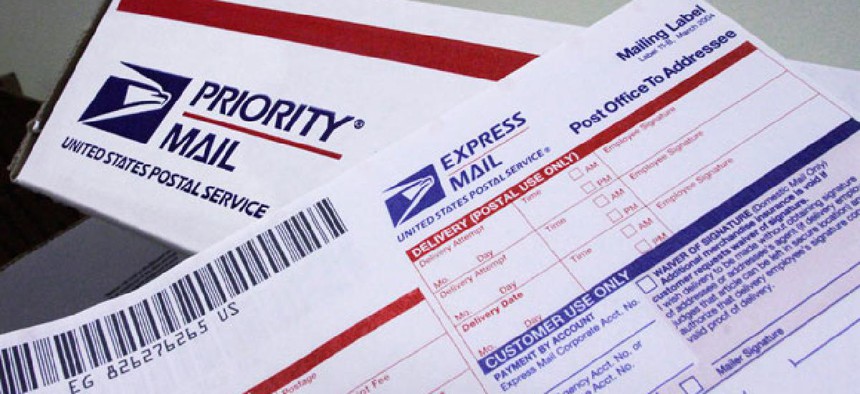Dramatic Workforce Reductions, Rate Hikes Likely for USPS
While Congress debates reform, panel tells Postal Service to take cost savings into its own hands.
Lawmakers and U.S. Postal Service officials on Wednesday largely agreed on the need to reduce the agency’s workforce and increase rates where feasible in order for the agency to reach fiscal solvency.
Witnesses and members of the House Oversight and Government Reform Committee said during a hearing that USPS must “right-size” its workforce to reduce overhead costs and improve the agency’s fiscal outlook. The Postal Service should also use its flexibility to raise rates within pre-set price caps, officials said at the hearing.
“I think everyone up here realizes there’s going to be some downsizing,” said Rep. Elijah Cummings, D-Md., the committee’s ranking member. “We want people working, but we don’t want to destroy the entity at the same time.”
Postmaster General Patrick Donahoe said the Postal Service -- which has reduced its workforce by 200,000 over the past several years -- would need to cut an additional 100,000 jobs through attrition by 2016 to get the agency back on sound fiscal footing.
Another area of agreement included the need to reform the prefunding requirement for retirees’ health benefits. Representatives from both parties -- as well as U.S. Comptroller General Gene Dodaro -- suggested moving to actuarial payments, as called for in President Obama’s fiscal 2014 budget proposal.
Oversight committee Chairman Rep. Darrell Issa, R-Calif., said in negotiations that went into the “wee hours” of the last legislative session a bipartisan agreement had been reached to include actuarial payments.
Currently, USPS makes pre-fixed annual payments into an account for future benefits. The Postal Service has defaulted on its payments the last two years, however, and USPS Board of Governors Chairman Mickey Barnett told the panel the Postal Service will not make its next payment in September either.
Switching to actuarial payments to fund future retirees’ health benefits would save USPS between $2 billion and $3 billion annually, Issa and Dodaro agreed. Donahoe, however, echoed previous calls for the Postal Service to enter into its own health benefits system, rather than being in the same pool as the rest of the federal workforce.
The Postal Service could save an additional $2 billion by eliminating Saturday mail delivery, officials said, a plan USPS recently reversed.
Issa asked Barnett why USPS had unlawfully ignored its requirement to make payments into the retirees’ health benefits fund while refusing to defy the congressional mandate for six-day delivery, to which Barnett pointed to concerns for the workforce and Postal Service business partners.
“We got our answer,” Issa retorted, cutting off Barnett mid-sentence. “The unions wanted six-day [delivery].”
While lawmakers from both sides echoed postal officials’ calls for comprehensive postal reform legislation, several lawmakers said the Postal Service should take steps to reduce costs on its own.
“If you want to blame Congress, that’s the easy thing to do,” said Rep. Doug Collins, R-Ga.
Issa said his committee was “close” to introducing a USPS reform bill, but needed more time for various sides to come together. He added he hopes to introduce legislative language “at least by the end of the year.”
Last week, Issa’s Senate counterpart, Homeland Security and Governmental Affairs Committee Chairman Sen. Tom Carper, D-Del., said he hopes to introduce a bill by August.
In the more immediate future, Donahoe addressed the recent string of mailings to officials containing ricin by assuring committee members Postal Service procedures will not only detect any poisoned letters, but also help investigators work back to find the criminals responsible.




